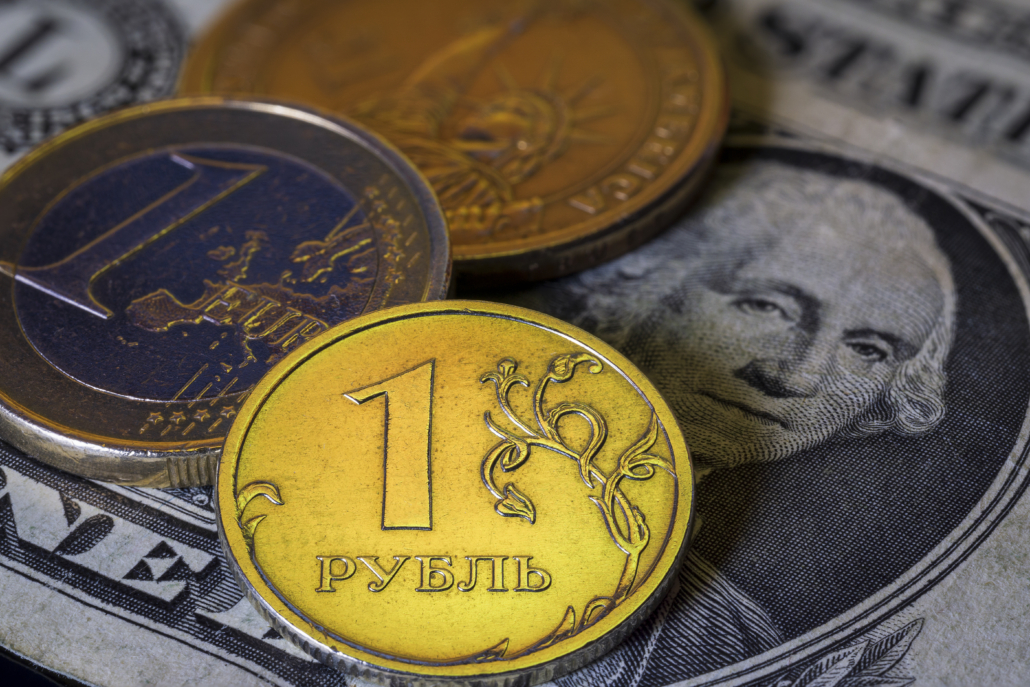#EconomicPolicy
#EconomicPolicy77
Contacts:
Barry Eichengreen: eichengr@berkeley.edu
Massimo Ferrari Minesso: massimo.ferrari_minesso@ecb.europa.eu
Arnaud Mehl: arnaud.mehl@ecb.europa.eu
Isabel Vansteenkiste: isabel.vansteenkiste@ecb.europa.eu
Roger Vicquéry: Roger.Vicquery@bankofengland.co.uk
Effects of sanctions on the target’s exchange rate
Drawing on history to shed light on the Russian rouble since the invasion of Ukraine
Exchange rate movements are not an appropriate metric of the success or failure of sanctions, but a reflection of the type and scale of the measures taken. That is one of the findings of new research by Barry Eichengreen, Massimo Ferrari Minesso, Arnaud Mehl, Isabel Vansteenkiste and Roger Vicquéry, which highlights the channels through which international sanctions affect the exchange rate.
Relying on an original historical dataset of sanction episodes going back to the First World War, the authors test the predictions of theoretical studies rationalising the behaviour of the Russian rouble following Western sanctions.
Among their results, they find that import restrictions are associated with appreciation of the exchange rate and declining imports. Trade embargoes that restrict both exports and imports do not affect the exchange rate significantly, consistent with the prior that the effects of the two types of sanctions offset one another. Asset freezes are associated with an exchange rate depreciation proportional to the value of assets frozen.
When Russia invaded Ukraine in February 2022 and sanctions were imposed, the rouble initially lost more than 60% of its value against the US dollar. It then recovered fully, giving rise to speculation about whether sanctions had the intended effect.
Theoretical studies have since provided conceptual frameworks for understanding the impact of sanctions on the exchange rate. They stress that the effect of sanctions on the exchange rate depends on the type of sanction imposed and its effect on the balance of currency demand and supply.
Sanctioning exports and freezing official reserve assets reduce foreign currency supply, while sanctioning imports reduces foreign currency demand. Intuitively, sanctions limiting imports force the sanctioned country to switch spending toward domestic goods, which leads to real appreciation of the currency, while sanctions limiting exports have the opposite effect.
These predictions match developments in the rouble exchange rate in 2022. But matching developments in a specific episode says nothing about the broader applicability of these models.
The new study therefore uses the longer history of sanctions to tease out the channels through which sanctions affect the exchange rate. The authors introduce an original database of sanctions spanning the period 1914-45 – an era in which both large and small economies were targeted by multilateral sanction packages, facilitating comparisons with today’s Russian war episode.
Episodes coded in the new dataset range from the blockade of the Central Powers during the First World War to the invasion of Ethiopia by Fascist Italy and US freezing of foreign assets during the Second World War.
The dataset confirms that the breadth and scope of the sanctions taken against a country of the systemic importance as Russia are unprecedented since the Second World War. In contrast, countries facing economic sanctions during the First World War and the interwar period were of a size comparable to today’s Russia – about 2-3% of global GDP and trade. Countries facing economic sanctions after the Second World War were on average ten times smaller, accounting for about 0.2-0.3% of global GDP and trade.
The study estimates the dynamic response of the exchange rate using local projections, controlling for country fixed effects, time fixed effects and covariates. To do so, the research team expands existing historical dataset of foreign exchange prices at a weekly frequency, introducing new data on the Swiss foreign exchange black market during wartime periods.
The authors condition the foreign exchange impact of sanctions on the type of measure imposed and its timing. Import restrictions are associated with appreciation of the exchange rate and declining imports, in line with model-based predictions. Trade embargoes that restrict both exports and imports do not affect the exchange rate significantly, consistent with the prior that the effects of the two types of sanctions offset one another.
Asset freezes are associated with an exchange rate depreciation proportional to the value of assets frozen, as posited by theory. The depreciation persists up to two months. In contrast, the estimated response of the exchange rate to export restrictions is statistically insignificant, which points to identification challenges arising from data limitations more than to empirical rejection of the models.
These findings suggest that recent models of the effects of sanctions on the exchange rate do not just match developments in today’s Russia episode but have broader applicability.
Sanctions and the Exchange Rate in Time
Authors:
Barry Eichengreen (University of California, Berkeley)
Massimo Ferrari Minesso (European Central Bank)
Arnaud Mehl (European Central Bank)
Isabel Vansteenkiste (European Central Bank)
Roger Vicquéry (Bank of England)









